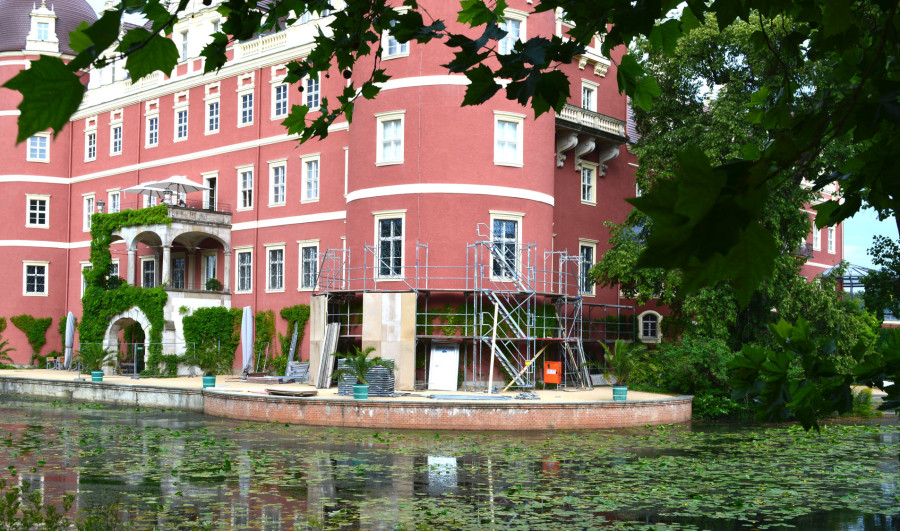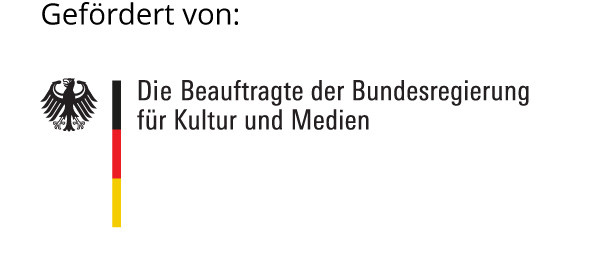Renovation of the castle facade has begun
Scaffolding work in the inner courtyard of the New Castle completed
Preparations for the renovation of the facade of the New Palace in Fürst Pückler Park Bad Muskau in July 2023 have begun with the erection of scaffolding on the south tower of the New Palace. The first construction phase around the south wing of the three-winged complex was completed at the end of April 2024. Work on the second construction phase in the castle courtyard was completed at the end of November 2024. The third construction phase is planned for 2025.
Reason for and measures of the renovation
An examination of the decorative elements in 2021, which aimed to determine the materiality, building structure and structural condition with regard to damage and the need for renovation, revealed advanced damage, especially to the decorative vases made of cast stone/artificial stone, as well as soiling typical of ageing, cracking, damaged component connections and partial instability and structural decay of the façade, which is characterized by numerous roof structures. A general overhaul of the entire surfaces and the replacement of the cast stone elements were therefore recommended. The work, divided into four construction phases, now includes repairs to decorative elements such as volutes, figures and crown molding, the closing of joints, cracks and chipped plaster, a new coat of paint and the replacement of 106 vases.
New facade decoration
Commissioned by Prince Frederick of the Netherlands (1791-1881), the lord of Muskau after Pückler, the New Palace was rebuilt between 1863 and 1866 and given a playful neo-Renaissance façade. The reconstruction of the New Palace, which was completely burnt out at the end of the Second World War in 1995-2013, also involved the large-scale rebuilding of decorative elements and roof superstructures, which were then placed on the gables, dwarf houses and towers.
Hardly any of the new vases made of artificial stone at the time were able to withstand the extreme weather conditions in an exposed location for long, meaning that 106 of them have now been replaced by hollow bodies made of cast aluminum. The historic decorative elements made of cast iron have proven to be weatherproof and are now only being repaired in places.


